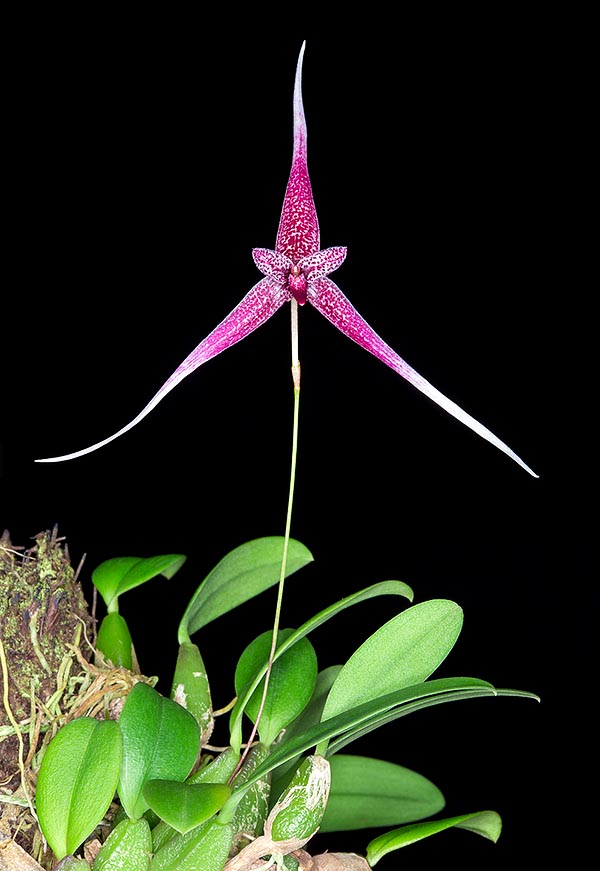Family : Orchidaceae

Text © Pietro Puccio

English translation by Mario Beltramini

Philippines epiphyte, the Bulbophyllum woelflieae is easy to cultivate. Splendid stellate 8-12 cm flowers © Giuseppe Mazza
The Bulbophyllum woelfliae Garay, Senghas & K.Lemcke (1996) is an epiphytic species with ovoidal pseudobulbs, 2 cm long, spaced of 1-3 cm on a creeping rhizome rooting at the nodes with filiform roots.
Solitary leaf, at the apex of the pseudobulb, ovate-elliptical with obtuse apex, about 2,5 cm long, and 1,5 cm broad, of pale green colour, coriaceous.
Inflorescence from the base of the pseudobulb or from the nodes of the rhizome, 8-10 cm long, bearing one single flower, of 8-12 cm of diameter, with caudate sepals and mobile labellum, of white colour densely spotted of purple, odourless; the flower lasts a few days, opening in the morning and closing around noon.
It reproduces by seed, in vitro, and at amateur level by division, with each section provided of at least 3-4 pseudobulbs.
Floriferous species and easy to cultivate with big flowers, even in relation to the size of the plant, whose beauty compensates the short duration, requires a slightly shaded and aerated position, intermediate temperatures, 20-30 °C, wiht lowest values not under the 15 °C, and high atmospheric humidity, 75-85%.
Frequent waterings and nebulizations during the growth period, slightly more reduced during the vegetative rest, utilizing rain water, demineralized or by reverse osmosis, and monthly fertilizations with a hydrosoluble balanced product, with microelements, at 1/5 the dosage shown on the package.
It is preferably mounted on logs, pieces of bark or cork rafts with some sphagnum at the base to hold the humidity. The transplants, when strictly necessary, are to be done at the vegetative reastart.
The species is reported in the appendix II of CITES (species whose trade is internationally ruled).
→ For general notions about ORCHIDACEAE please click here.
